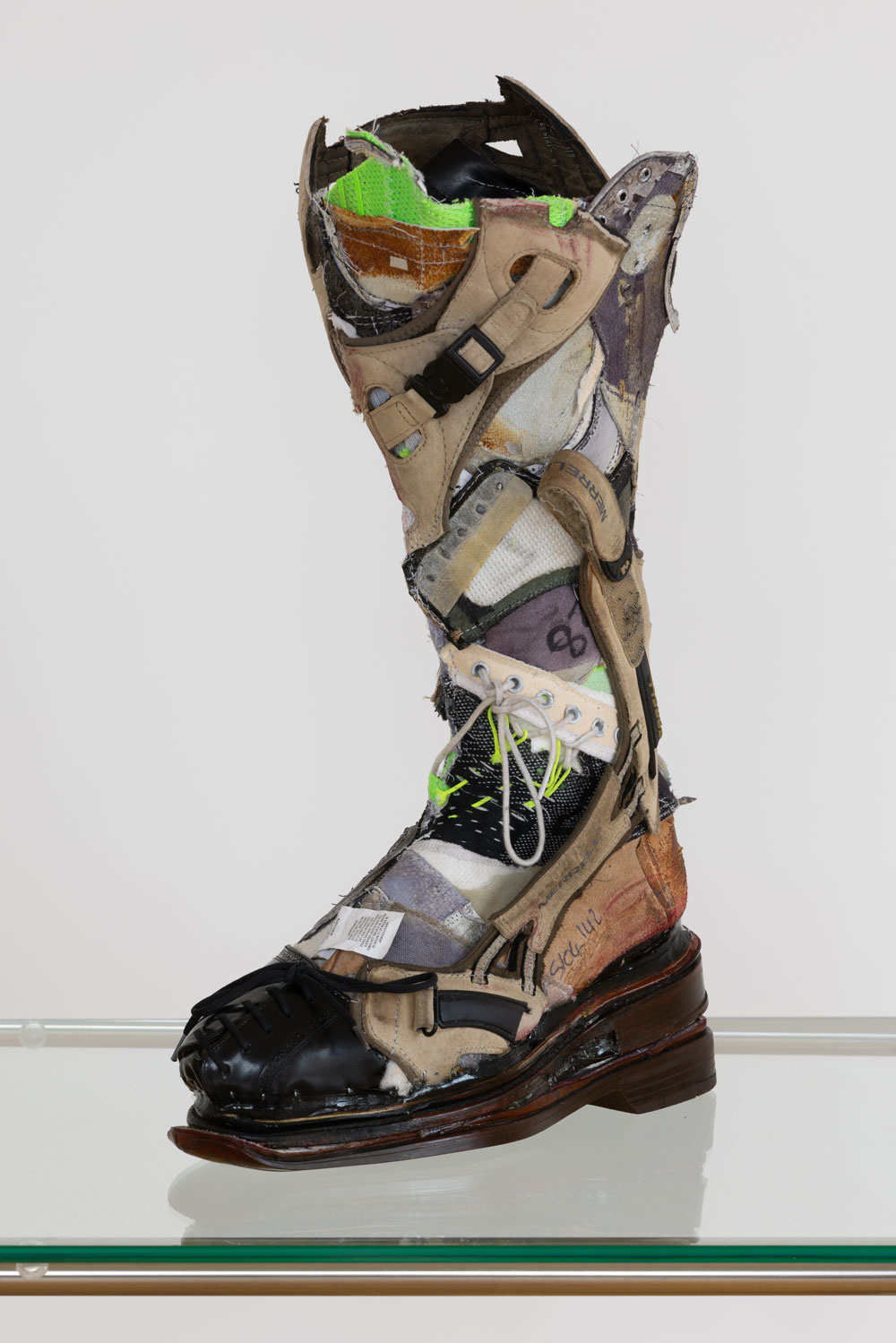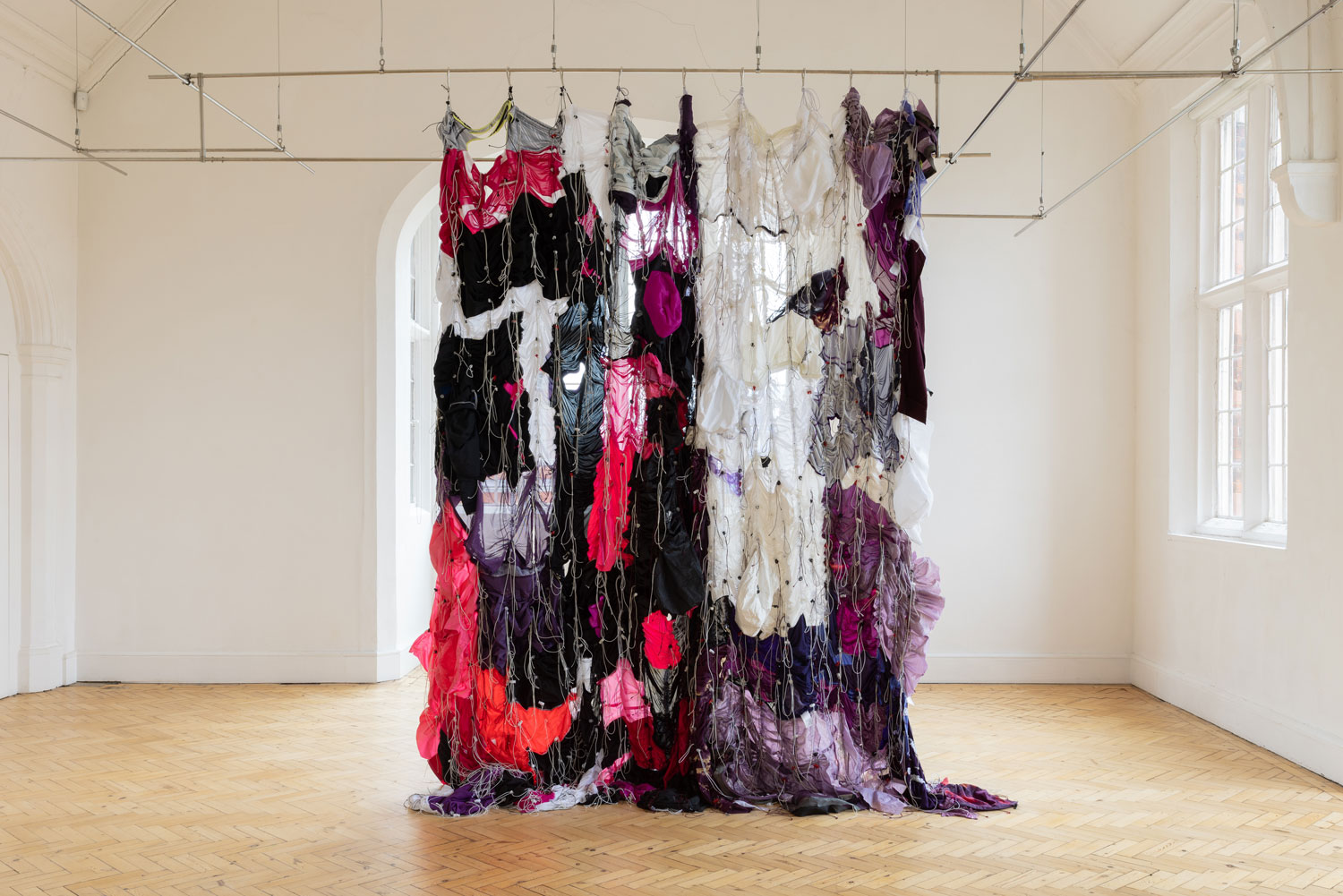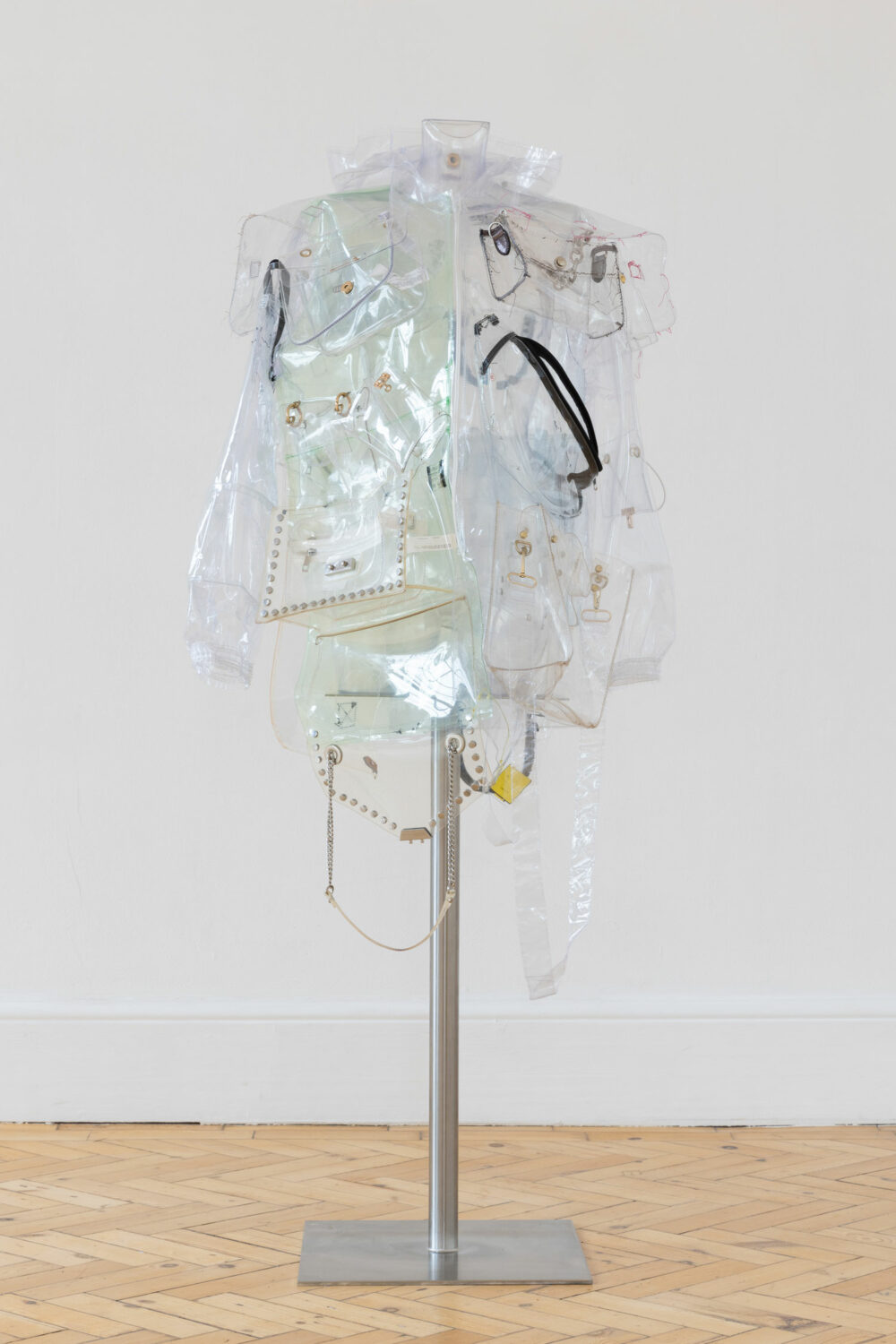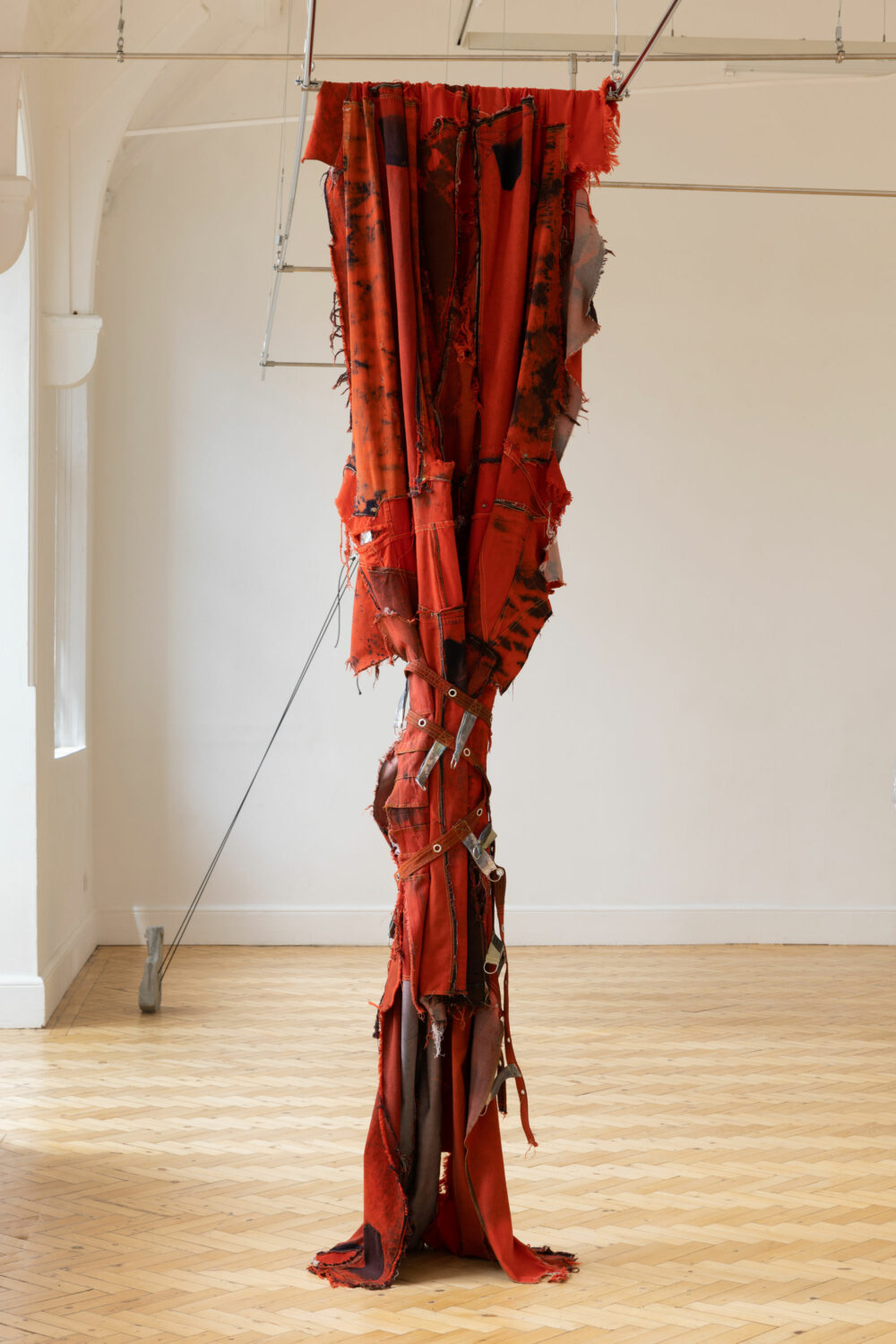Interview: Tenant of Culture On Fashion Waste, Women’s Labour & Her New Camden Art Centre Show
By Something CuratedRepurposing discarded garments and accessories into new sculptural forms, Tenant of Culture’s, the anonym of Dutch artist Hendrickje Schimmel, works nod to former relics. At once desirable and monstrous, they are a reminder of the unstable cycle of trends and fashion, and the exploitative and often invisible economies of supply and demand. The artist’s research for her new exhibition, Soft Acid, which is open now and runs until 18 September 2022 at Camden Art Centre, began at the north London-based institution’s archives, where she uncovered reference to the mass labour of women in the laundry industry in 19th century Britain. The garments used in Tenant of Culture’s works are made from denim, waterproofs and performance-wear, materials that take a huge amount of water and chemicals to produce and finish. Deconstructed, bleached, re-dyed, re-assembled, wrung-out, pressed, hung and stretched, her sculptures mirror methodologies employed in the laundry and textile dye industries. To learn more about the artist’s fascinating practice and the new exhibition, Something Curated spoke with Schimmel.

Something Curated: Can you give us some insight into your background and journey to art-making?
Tenant of Culture: I come from a fashion design background; I’ve had formal training in both design and textiles alongside experience working in the fashion industry for several years. My main fascination has always been garments and textiles, their construction, social context and history. Moving into an art context was motivated by a lack of places to practice and show interdisciplinary and critical fashion work. The pace of production and the time for reflection suited well however I would still call myself a fashion practitioner.

SC: When and how did you first start repurposing discarded textiles and deadstock fashion in your work; and what interests you in utilising these materials?
ToC: There are many motivations behind repurposing existing garments and accessories. It was first and foremost an economical alternative to buying new fabrics and gave me access to a wider range of materials. It seemed unnecessary to use new materials and add to the ever-growing pile of wasted garments when there is so much second hand stuff to utilise. When I decided to categorically work with these materials it gradually became more of a statement against artistic authenticity and originality in relation to wastefulness and an attempt at carving out a position that is less about the production of the new and more about the reconfiguration and digesting of the already existing. This is symbolised in the name of my practice Tenant of Culture.

SC: Through your practice, you broach issues around the lack of value we place on labour, and women’s labour specifically, in the fashion industry — could you expand on this?
ToC: I think it has to do with the way we historicise the processes and tools that shaped modern-day mass production. Industry, technology, progress. When we think about the industrial revolution, we picture railroads and engines, steel and coal, yet the driving force behind the development of machinery capable of mass production was the upscaling of the production of textiles. A similar idea is proposed in Ursula K. Le Guin’s The Carrier Bag Theory of Fiction, where she argues that the carrier bag or receptacle was the first piece of technology rather than the tool. We think of progress in terms of productivity, never in terms of maintenance. All of this contributes to the invisibility of narratives surrounding ‘women’s work’ to various degrees. In my current exhibition I look at this subject from the point of view of the laundry industry and the use of washing machines in a historical and contemporary setting. Looking at the 19th century Steam Laundry as an example of an industry that has hardly been documented or researched to this day.

SC: And what are you currently reading?
ToC: I’m reading Drive Your Plow Over the Bones of the Dead by Olga Tokarczuk and Worn: A People’s History of Clothing by Sofi Thanhauser.
Tenant of Culture: Soft Acid runs at Camden Art Centre until 18 September 2022.
Feature image: Installation view of Tenant of Culture: Soft Acid at Camden Art Centre, 2022. Courtesy Camden Art Centre, Photo: Rob Harris